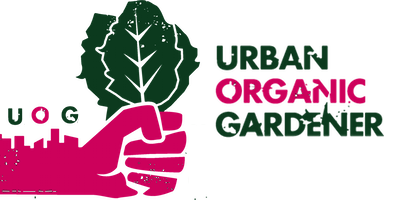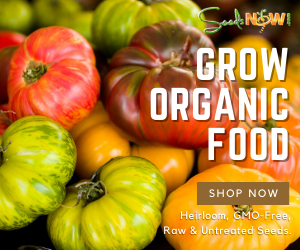There were a few posts that got me thinking about healthy and organic foods being affordable. The first one came from the New York Times titled A Look at How Many Calories $1 Will Buy.
The article states, “One dollar’s worth of Coke has 447 calories, while $1 of iceberg lettuce has just 16.5.” First off, who really eats iceburg lettuce??! That pretty much summarizes the problem. The cheaper foods are the ones that aren’t the healthier options.
On the same day, I saw another article on MindBodyGreen titled Why Americans Are Getting Fatter. It had an infographic that clearly showed why we have become an obese nation. Since the 1960s, the weight of the average male has increased from 166 to 191 pounds. It also said that the average American spends more money on education, computers or new cars.
When I talk to people about eating non-processed and organic foods, they often balk at the pricing. When I posed that question to friends on Facebook, they chimed in with ways how they avoid eating cheap and fast foods.
Ideas from Facebook Friends
Rachel Hoff suggested that learning how to cook your meals from scratch is a good way. Most people don’t know how to cook anymore because it’s so complex on the TV shows.
Using a slow cooker was recommended by Jesse Mabry. That eliminates the time and not knowing what to cook excuse. You can throw your meal in the morning and by the time you get home from work it is complete.
Other Ideas
Buy from the bulk bins at your grocery or health food store. Not only will this cut down on the packaging, but it’s often cheaper when you buy this way as well. I buy a lot of my dried goods this way such as nuts, seeds, beans and grains.
Join your local CSA (Community Supported Agriculture). If you can’t afford it or think it’ll be too much, make it more affordable by sharing or splitting it with a friend or family member.
You can often find deals at your local Farmers Markets. By growing directly from the grower, you are cutting out the costs of the middleman and likely getting fresher food.
You can also grow your own food. If you look at the economics of it over an extended period of time, it makes total sense. Obviously the scalability isn’t there for most of us, but every little bit certainly helps out.
Sound Off
What are other ways that you save money on healthy and organic foods?
httpv://www.youtube.com/watch?v=2Uu3hevEtxk






















Hi Mike,
One of the things we do is to buy in bulk. One of the most expensive foods to buy organic is meat. We found a hormone- and antibiotic free chicken at BJ’s and we buy our chicken there. Another tip is to always look for sales and when it’s on sale, stock up! We also try to frequent farmer’s markets when we can for fresh produce.
Robin
Buy bulk is an easy one, but I have a few more.
Buy produce in season and store them. If you want rasberries in February, you better be buying in bulk now and storing them unless you’d like to spend 3x later. I drink a berry smoothie almost every morning so I have literally gallons of strawberries, blueberries, blackberries, and rasberries in my freezer.
Prioritize where you spend your ‘organic’ money. IMHO, the order should be meat, dairy, any produce you eat the skin, and then the rest of produce. Don’t get caught up buying junk like Organic Cookies or Organic Chips – they are still bad for you and the organic label on stuff like that is usually just justification for poor eating habits.
That’s all I have…
There’s a guy posts on Yahoo Green: the Ultimate Cheapskate – Has a list of good wholesome foods, readily available at grocery stores for little or less (under a dollar in many cases). And beans, lentils, and legumes are most definately on that list!
That article drives me crazy. Most americans do not have problems meeting their calorie goals but are undernourished. So perhaps they should redo the graph by nutritional value.
In addition, so many of the unhealthy foods are less expensive because of government subsidies on foods like corn that have been capitalized by industry to churn out profits.
My best tip would be to use frozen fruits and vegetables when they are not in season. Even packaged frozen veggies are full of nutrition.
I have my own issues with measuring food costs on a per-calorie basis. Here’s a trick question for readers: How much does diet soda cost per calorie? Or tap water? Answer: infinity.
Thus the secret is to find healthy, inexpensive and energy-dense foods. Beans, lentils, potatoes with the skin on, healthy in-season produce when costs are lowest and quality is highest, etc.
It’s all to easy to shake out fists at the food industry or the government or whatever, but the solutions are out there. Thanks for the thought-provoking article!
Dan @ Casual Kitchen
The solutions are definitely out there. We all need to accept responsibility for our actions.
That’s why I loves my farmers markets!
And you can buy them in bulk!
And poor eating habits are rampant….
Wanna get into canning eventually.
We started our own garden this year to help with produce cost also, we cancelled our Costco membership and joined a local organic produce co-op. Yay!
We start in spring just after the frost is out of the ground looking for foods and herbs we can glean from nature for FREE. There is so much to harvest if you have the time to hike the woods, or ditches throughout the year…cat tails (picked when they are just under 12 inches tall, peel off the outer tough skin and steam…taste just like asparagus), garlic onion (invasive weed to most, but great herb to us!), wild asparagus, wild rice, elderberries, June berries, wild strawberries (very tiny but packed with sweetness) wintergreen, dandelions (made wine ~tastes like honey~ and jelly this year from picking dandelions..not to mention the greens taste great in salad when picked early enough), raspberries/blackberries/blueberries and our favorite…wild concord grapes for jelly, wine, garnish. The list goes on and on! We even go so far as to look for random apple/pear/cherry trees in the country (making sure we are not trespassing) for fruit. All of the above gleaned from areas that are non-treated and naturally grown. Yum…can’t beat the treats Mother Earth provides. Most of what we glean we process by canning, or freezing. It is such a great feeling knowing we are eating food we picked for free and are able to eat year ’round with a little bit of hard work and time investment.
Costco for the co-op. I love it.
I really like buying from bulk bins. Also, our CSA has an organic egg share and a meat share. Much more economical than buying from Whole Foods!
Def wanna learn more about wild harvesting. Dandelion I can definitely spot already.
Whole Foods is an expensive grocery store.
Talk about poor eating habits meat and dairy shouldn’t even be on the list. Meat isn’t clean any more, clogs the arteries, drains calcium from the bones, & causes diabetes.
I don’t even use manure in my garden due to mad cow, ecoli ect. The only poo in my garden comes from worms. Dig up your lawn and grow your own food. Go out at night and squish the bugs after the food.
Hard to disagree with that.
I’m in San Diego, so similar forage-ables should be near you. Internet search and then real life search for Nasturtiums, prickly pear cactus, hawksbeard, pineapple weed, anise (I hate anise-maybe you don’t) and wood sorrel. Stinging nettle is edible too if you boil it first, and makes a tasty soup. I even find swiss chard and cilantro growing wild sometmes. I guess the seeds escape from gardens.
That’s what’s up!